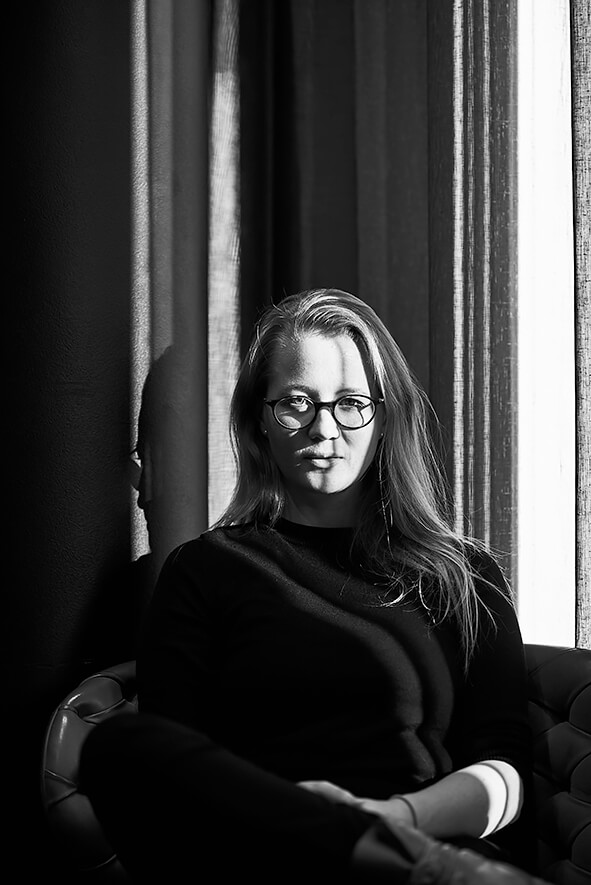Lara Wilde dances in her projects between the themes of raw human emotions and the complexity of the outside world. As a photographer and psychologist she is interested in what moves us as humanity on an individual level. Besides an intensive involvement with her protagonists, she stands for technical perfection in the execution, which has earned her several awards. Since 2016 Wilde is working as a fine art photographer and creative director.
Statement
A few years ago I moved from a Norwegian village back to Berlin to study photography.
What I didn't know back then is that you unlearn being a city person when you are gone long enough.
I really thought I would die in the anonymous streets of the city I once loved so much.
As you know, when we are determined to solve a problem, we go deeper into it.
So I wanted to meet strangers and see how they feel outside of their awesome social herds.
A lot of nights I now invited myself to other peoples houses, men and women, all strangers, drinking coffee and photographing them in the process.
I shot them in longterm exposures, first, because I didn't want to bring a lot of equipment, but later I enjoyed the slow process, sitting there in darkness and waiting for the picture to come through. For some people, it was torture sitting around in the darkness, confronted with their thoughts without their smartphones, friends or busy surroundings. For me they looked like something was missing when they were just sitting by themselves. It felt really personal watching them trying to get comfortable in this inputless scene, to see them struggle, or to see them think and sometimes sharing the feelings that were coming forward. All these conversations with strangers, waiting around in the dark, gave me a feeling of togetherness, becoming a tiny particles of their lives and giving them something that they normally didn't have: Stillness.
They were so open and thankful for conversations and most of the times we talked about the real shit: About being lonely, about dying, about calling our parents and our first love.
All the stories found their way into the pictures and reminded me of everything we talked about.
But I personally got my Berlin back. Not at the streets, but at the dark corners of their homes.
Everything in their homes told their stories as loud as they did and I had the honor of being part of it for a short period of time.
I get you now, Berlin-people:
You are kind and giving, but you are afraid of being used.
You are interested in others, but don't want to be tangled up in other peoples problems.
You want to show yourself, but want to be accepted.
And if you like it our not, the people around you want that too.
